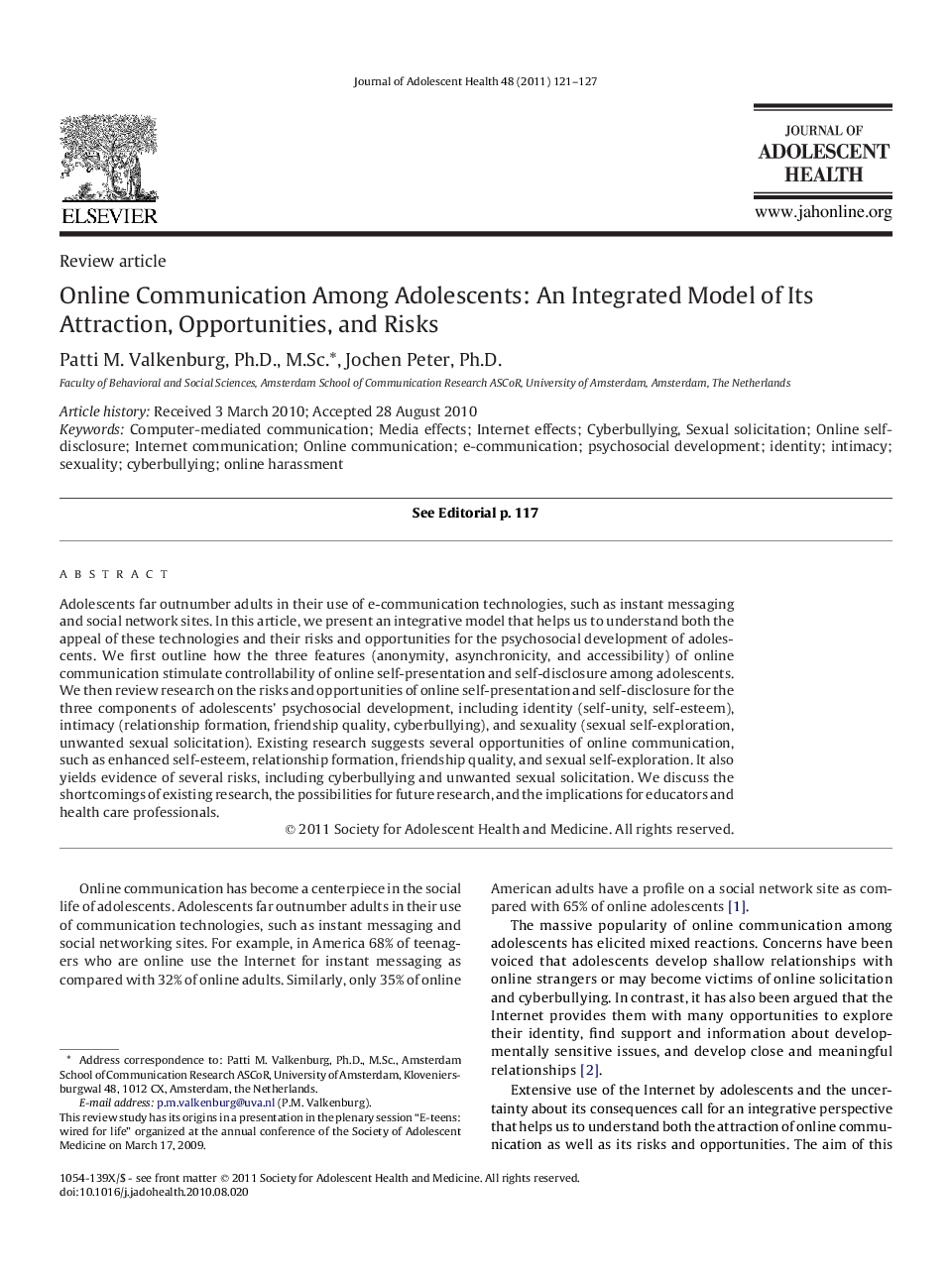| Article ID | Journal | Published Year | Pages | File Type |
|---|---|---|---|---|
| 1080252 | Journal of Adolescent Health | 2011 | 7 Pages |
Adolescents far outnumber adults in their use of e-communication technologies, such as instant messaging and social network sites. In this article, we present an integrative model that helps us to understand both the appeal of these technologies and their risks and opportunities for the psychosocial development of adolescents. We first outline how the three features (anonymity, asynchronicity, and accessibility) of online communication stimulate controllability of online self-presentation and self-disclosure among adolescents. We then review research on the risks and opportunities of online self-presentation and self-disclosure for the three components of adolescents' psychosocial development, including identity (self-unity, self-esteem), intimacy (relationship formation, friendship quality, cyberbullying), and sexuality (sexual self-exploration, unwanted sexual solicitation). Existing research suggests several opportunities of online communication, such as enhanced self-esteem, relationship formation, friendship quality, and sexual self-exploration. It also yields evidence of several risks, including cyberbullying and unwanted sexual solicitation. We discuss the shortcomings of existing research, the possibilities for future research, and the implications for educators and health care professionals.
